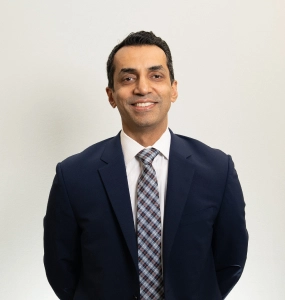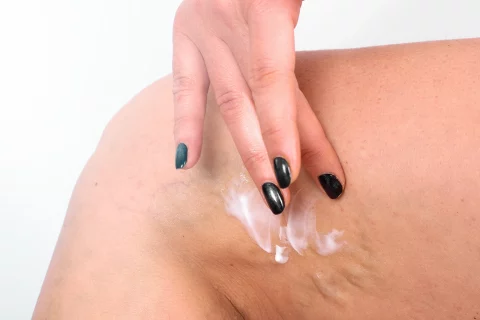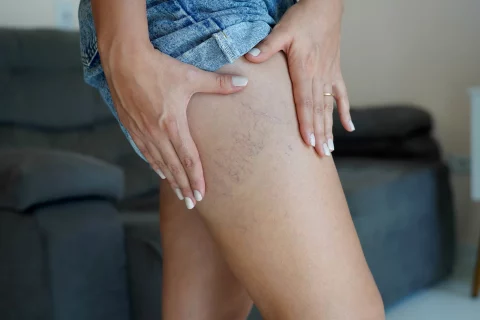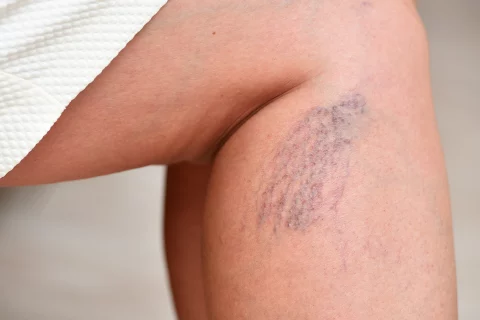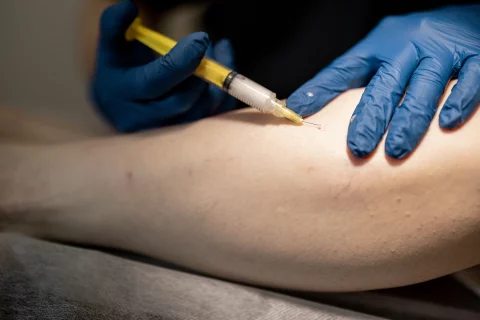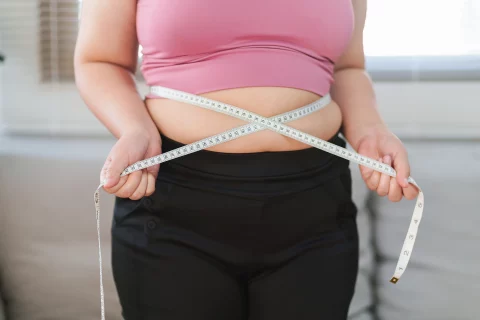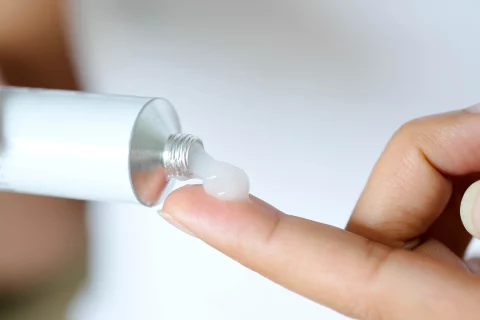Medical Impacts of a Spider Vein Burst
When a spider vein bursts, it can be alarming but also manageable with proper treatment. Spider veins, also called varicose veins, are weakened, twisted blood vessels that lie close to the skin’s surface.
Unfortunately, their thin walls have a tendency to rupture, especially if the vein becomes enlarged over time.
A ruptured spider vein can appear severe, with blood accumulating near the skin’s surface. Some telltale signs include bruising of the skin if the vein ruptures internally and bleeding externally if the skin is broken.
Either way, ruptured veins can leave you feeling a bit wonky from dizziness or faintness due to blood loss.
So what’s a person to do? Elevate and isolate, my friend. Elevating the affected leg above the level of your heart helps slow down the blood flow, reducing pressure within the vein.
Applying pressure with a clean cloth or compress can help stem the tide until you get to a doc. Remember: excess flow’s got to go!
When this happens, see your friendly neighborhood vein specialist as soon as you’re able. Minor vein ruptures tend to heal on their own over time, but you’ll want a trained eye to check things out and rule out any serious complications.
Left untreated, varicose veins can worsen and lead to problems like deep vein thrombosis and leg ulcers.
Causes of Spider Vein Bursts: Common Reasons Why Spider Veins Can Rupture
Spider vein bursts often occur when veins become enlarged and stretched over time due to increased pressure within them. Several factors can contribute to this:
Prolonged standing or sitting
Gravity and inactivity places extra pressure on the veins in your legs, which increases the likelihood they will rupture with minimal trauma.
Avoid sitting or standing for more than 30-60 minutes without shifting positions or taking a quick walk if possible.
Obesity
The extra weight on your legs and veins makes them work harder to pump blood back to the heart. This can overwork the vein walls and valves, causing them to weaken and rupture more easily.
Pregnancy
Hormonal changes during pregnancy along with the weight of the growing baby place additional strain on leg veins. This is why many women develop varicose veins for the first time while pregnant.
Hormonal changes
Hormones like estrogen and progesterone appear to play a role in weakened vein walls and valves. Women are more likely than men to develop varicose veins, possibly due to hormonal differences.
- Making lifestyle changes like those mentioned above can help reduce the risk of spider vein bursts and progression of venous disease.
- Frequently change positions and take ” Walking breaks if you have a desk job. Standing up can also help improve blood flow back to the heart.
- Exercise regularly to help strengthen vein walls and valves. Walking, swimming, and low-impact aerobics are ideal for varicose vein sufferers.
- Maintain a normal, healthy body weight as excess pounds add extra pressure and strain to your leg veins.
- Wear compression stockings to provide support, reduce swelling and assist the flow of blood back to the heart. Consider them for long periods of standing, travel, and physical activity.
Early detection and treatment of varicose veins – even before rupturing occurs – is key to preventing serious complications from venous insufficiency.
Minimally invasive procedures like sclerotherapy and endovenous laser treatment can eliminate problem veins and restore healthier blood flow.
Treatment Options for Spider Vein Bursts: Immediate and Long-Term Treatment Plans for Burst Spider Veins
Potential treatment options for burst spider veins depend on the severity of the rupture and damage.
Mild ruptures
Compression stockings – These medical-grade stockings compress the veins and reduce pressure and swelling. They help stimulate the flow of blood back to the heart, speeding up healing.
NSAIDs – Nonsteroidal anti-inflammatory drugs like ibuprofen can help reduce inflammation and relieve mild pain and discomfort. But avoid it if you have a stomach ulcer or kidney disease.
Elevation – Keeping the affected leg elevated above the level of the heart whenever possible helps reduce blood pooling in the veins. This expedites the healing process.
Moderate to severe ruptures
Sclerotherapy – Your doctor can inject a saline or chemical solution into the ruptured spider vein to scavenge it. This makes the vein shrink and eventually disappear.
Endovenopus laser ablation (EVLA) – A doctor threads a thin laser fiber into the vein and heats it from within. The heat seals the vein shut, which then fades away over time.
Vein stripping – Surgery to remove stubborn varicose veins that have ruptured by literally stripping them out of the leg. Done under general anesthesia and reserved for extreme cases.
Wound care – If bleeding from a ruptured vein caused an open wound, your doctor may prescribe antibiotics, wound cleansers and bandages to promote proper healing and reduce the risk of infection. Follow-up visits will be needed until it fully closes.
Immediate Steps for a Burst Spider Vein: First Aid For Ruptured Varicose Veins

The immediate steps you should take if a varicose vein ruptures:
- Apply direct pressure with a clean towel or cloth to slow bleeding.
- Elevate the affected leg above the level of your heart to reduce pressure within the vein.
- Seek immediate medical attention if bleeding will not stop to prevent excessive blood loss and associated health risks.
Minor vein ruptures often heal on their own, but monitoring by a vascular specialist is the safest course of action. Treatment options should be tailored to you based on a full evaluation. Don’t hesitate to call a professional for peace of mind!
How to Prevent Spider Vein Bursts: Lifestyle Changes To Reduce Varicose Vein Rupture Risk
Preventing burst spider veins is the best way to avoid potential complications associated with ruptured varicose veins. Here are some lifestyle changes you can make:
- Avoid standing or sitting in one position for extended periods of time. Take microbreaks every 20-30 minutes to get up, stretch, and walk around if you have a sedentary job.
- Exercise regularly, at least 3-4 times per week. Walking, swimming, and low-impact aerobics are best. They improve blood flow and circulation and strengthen your vein walls.
- Maintain a healthy weight. Losing even 5-10% of your body weight – if needed – can decrease pressure on your leg veins and lower your risk of rupture.
- Wear prescription compression stockings during the day. They provide external support for your veins and assist blood flow back to the heart. Ask your doctor for a recommendation.
- Elevate your legs above heart level when possible. Prop them up on pillows while sitting or lying down. This simple act reduces blood pooling which can damage vein walls over time.
- Consider physical therapy. Exercises focused on your calf muscles and legs in general can strengthen veins and improve venous return. Your doctor may recommend this.
- Address any medical conditions that may worsen varicose veins. This includes hormone imbalances, diabetes, high blood pressure, high cholesterol and more. Treating the underlying issue may help slow progression.
Additionally, treating varicose veins early – before they become large and prone to rupture – can significantly reduce your risk of future problems. Minimally invasive procedures like sclerotherapy and EVLA remedy valve dysfunction and seal off damaged veins respectively. Your doctor can determine if these are appropriate options based on an evaluation.
The key takeaway is that both lifestyle modifications and medical intervention may be needed to prevent complications from burst spider veins. Talk to your healthcare provider about creating a comprehensive plan that incorporates diet, exercise and potential treatments to promote long-term venous health.
Conclusion
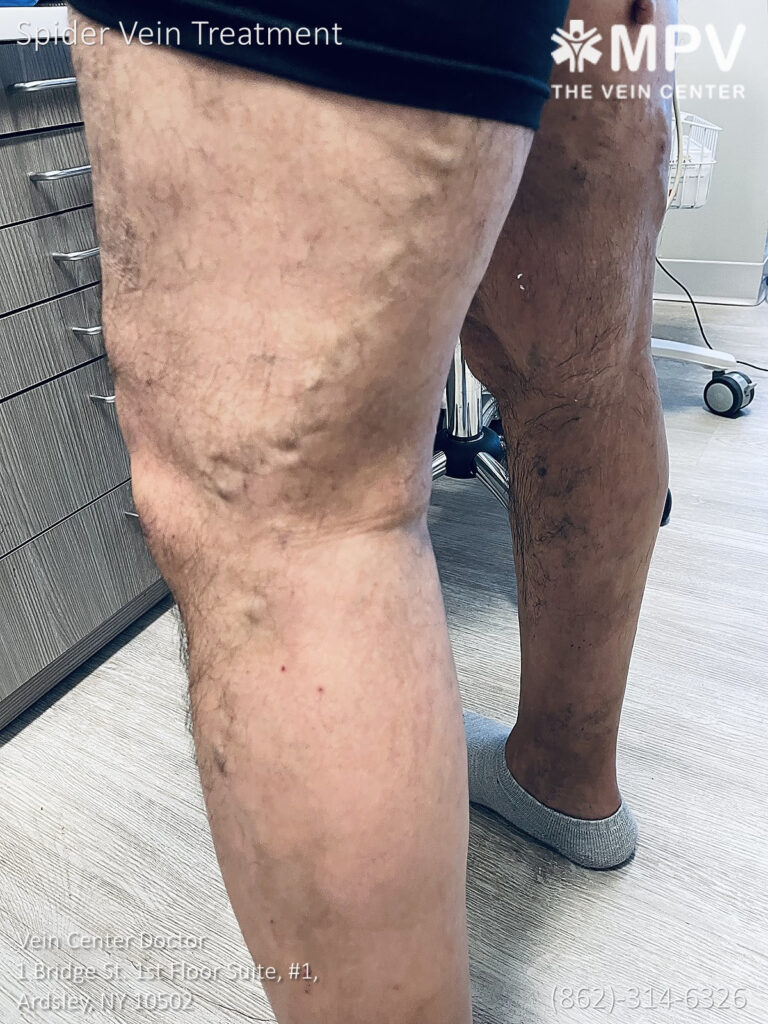
While ruptured varicose veins might seem scary at first, there are steps you can take at home and treatments available from vascular specialists to effectively manage the issue.
At home, elevating the affected leg and applying pressure can help stop bleeding from a burst vein. Make an appointment with a vein doctor as soon as possible if symptoms persist.
Your doctor will likely recommend compression stockings, sclerotherapy, EVLA or possibly vein stripping depending on severity. They’ll also discuss lifestyle changes to mitigate risk factors for ruptured veins.
To prevent future problems, aim for:
- Frequent activity breaks if sitting for long periods
- A regular exercise routine
- A healthy body weight
- Compression stockings
- Elevating your legs periodically
With early intervention and treatment of varicose veins, complications like deep vein thrombosis, blood clots and leg ulcers become far less likely.
